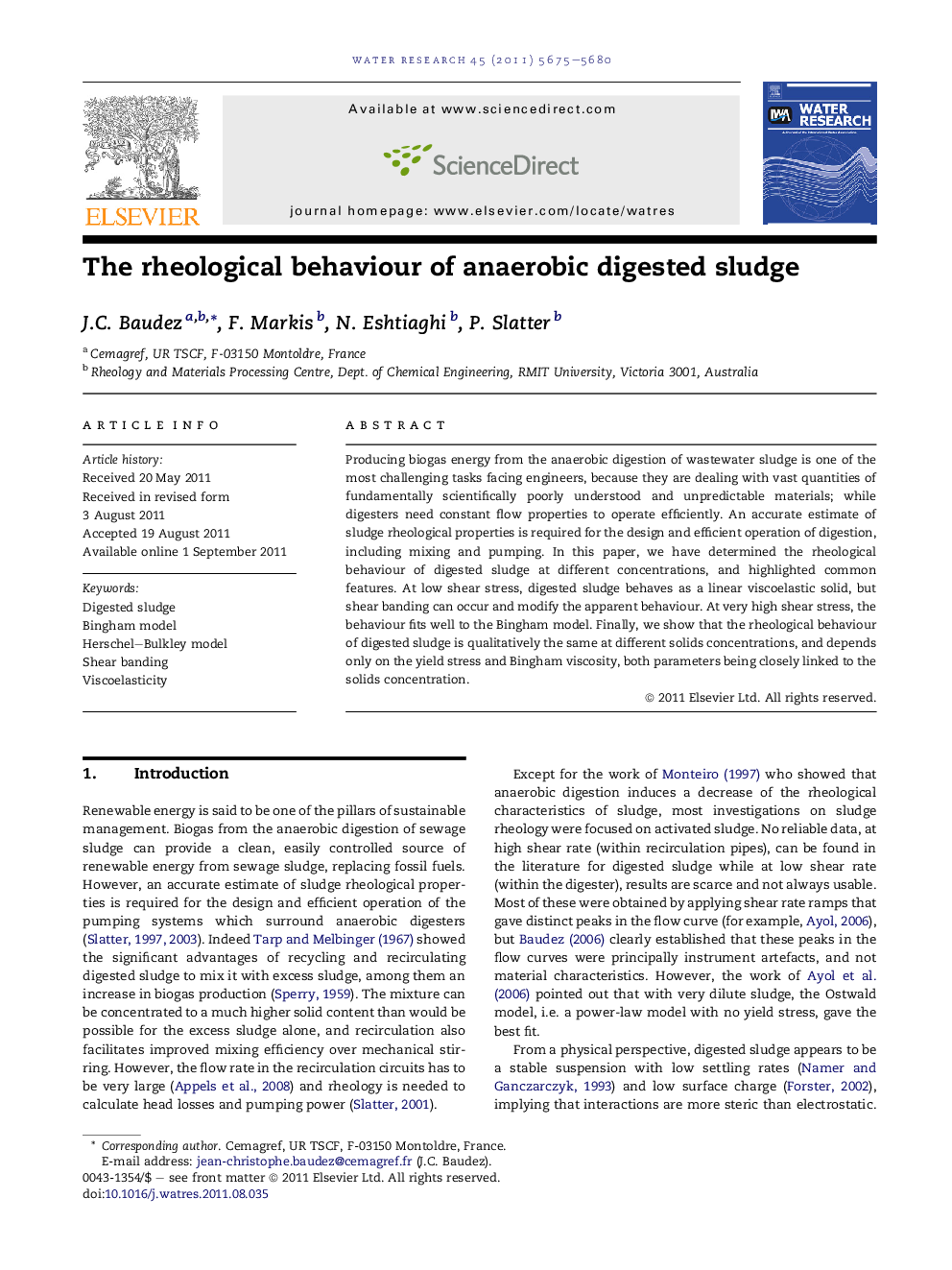| Article ID | Journal | Published Year | Pages | File Type |
|---|---|---|---|---|
| 4483186 | Water Research | 2011 | 6 Pages |
Producing biogas energy from the anaerobic digestion of wastewater sludge is one of the most challenging tasks facing engineers, because they are dealing with vast quantities of fundamentally scientifically poorly understood and unpredictable materials; while digesters need constant flow properties to operate efficiently. An accurate estimate of sludge rheological properties is required for the design and efficient operation of digestion, including mixing and pumping. In this paper, we have determined the rheological behaviour of digested sludge at different concentrations, and highlighted common features. At low shear stress, digested sludge behaves as a linear viscoelastic solid, but shear banding can occur and modify the apparent behaviour. At very high shear stress, the behaviour fits well to the Bingham model. Finally, we show that the rheological behaviour of digested sludge is qualitatively the same at different solids concentrations, and depends only on the yield stress and Bingham viscosity, both parameters being closely linked to the solids concentration.
► In this paper, we explored the rheological behaviour of digested sludge. ► We pointed out the existence of shear banding. ► We pointed out the existence of similarities in the rheological behaviour. ► A master curve is obtained by reducing the rheological characteristics. ► Rheological parameters are strongly related to the solid concentration.
